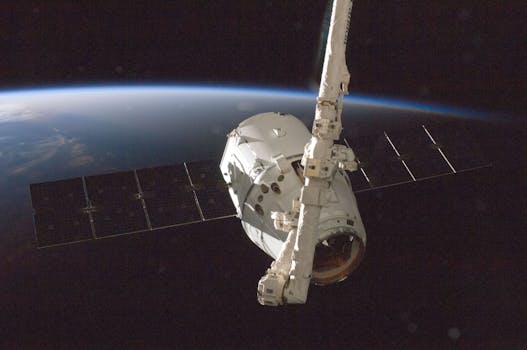
LEO Satellites: The Future of Global Connectivity
Low Earth Orbit satellites, or LEO satellites, are revolutionizing the way we communicate and access information. With their ability to provide faster and more reliable connectivity, LEO satellites are transforming the global telecommunications landscape. In this article, we will delve into the world of LEO satellites, exploring their benefits, applications, and the impact they are having on our daily lives.
LEO satellites are a type of satellite that orbits the Earth at an altitude of around 160 to 2,000 kilometers. This low orbit allows them to provide a range of benefits, including lower latency, higher bandwidth, and improved connectivity. With the increasing demand for global connectivity, LEO satellites are becoming an essential component of modern telecommunications infrastructure.
How LEO Satellites Work
LEO satellites work by transmitting and receiving data through a network of ground stations and user terminals. The satellites are equipped with transponders, which receive and retransmit signals to and from the ground stations. The data is then transmitted to the user terminals, which can be located anywhere in the world. This allows for seamless communication and data transfer between different locations, regardless of geographical distance.
The low orbit of LEO satellites also enables them to provide a range of other benefits, including improved spectral efficiency, reduced power consumption, and increased security. With the use of advanced technologies such as beamforming and beam-hopping, LEO satellites can provide high-speed data transfer rates, making them ideal for applications such as video streaming, online gaming, and cloud computing.
Applications of LEO Satellites
LEO satellites have a wide range of applications, from providing broadband internet access to remote and underserved communities, to supporting critical infrastructure such as emergency response systems and financial networks. They can also be used for Earth observation, weather forecasting, and navigation. Additionally, LEO satellites are being used to support the growing demand for Internet of Things (IoT) connectivity, enabling the deployment of IoT devices in remote and hard-to-reach areas.
The use of LEO satellites is also becoming increasingly important in the field of aerospace and defense. They can be used for military communications, surveillance, and reconnaissance, providing a secure and reliable means of communication for military personnel and assets. LEO satellites can also be used for search and rescue operations, disaster response, and environmental monitoring.
Challenges and Opportunities
While LEO satellites offer a range of benefits, there are also challenges associated with their deployment and operation. One of the main challenges is the high cost of launching and maintaining a large constellation of satellites. Additionally, there are concerns about the environmental impact of LEO satellites, including the potential for space debris and interference with other satellite systems.
Despite these challenges, the opportunities presented by LEO satellites are significant. With the growing demand for global connectivity, LEO satellites are poised to play a critical role in providing fast, reliable, and secure communication services. As the technology continues to evolve, we can expect to see new and innovative applications of LEO satellites, from providing connectivity to remote and underserved communities, to supporting the growth of IoT and other emerging technologies.
LEO satellites are also driving innovation in the field of satellite technology, with the development of new technologies such as advanced propulsion systems, power generation, and thermal management. The use of artificial intelligence and machine learning is also being explored, enabling the optimization of satellite operations and the improvement of communication services.
Conclusion
In conclusion, LEO satellites are revolutionizing the way we communicate and access information, providing faster and more reliable connectivity worldwide. With their range of benefits, including lower latency, higher bandwidth, and improved connectivity, LEO satellites are transforming the global telecommunications landscape. As the technology continues to evolve, we can expect to see new and innovative applications of LEO satellites, from providing connectivity to remote and underserved communities, to supporting the growth of IoT and other emerging technologies.




